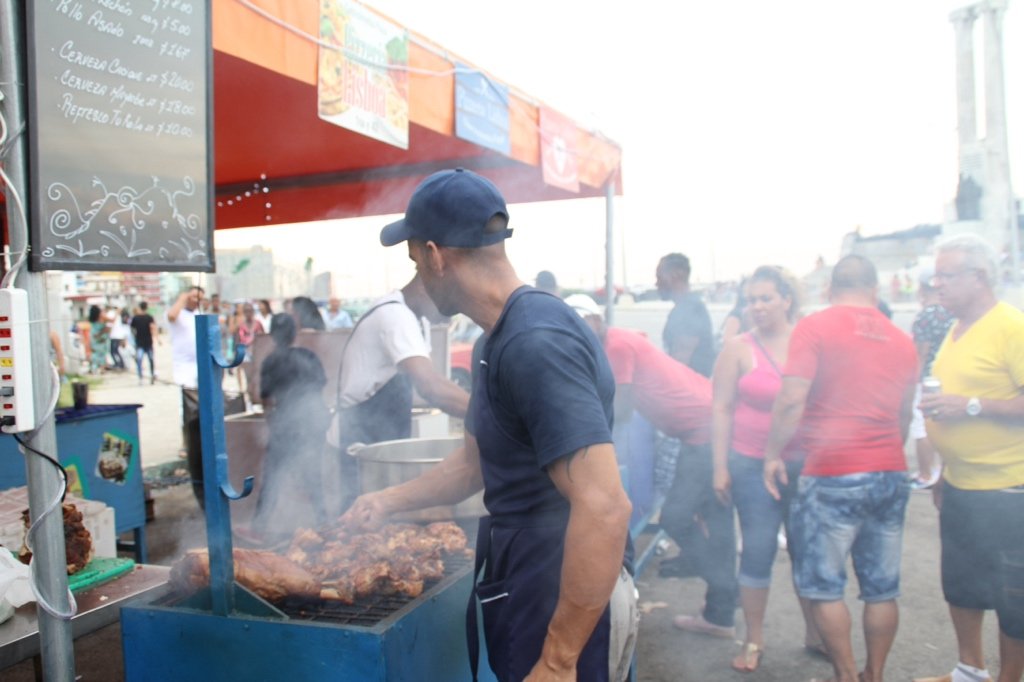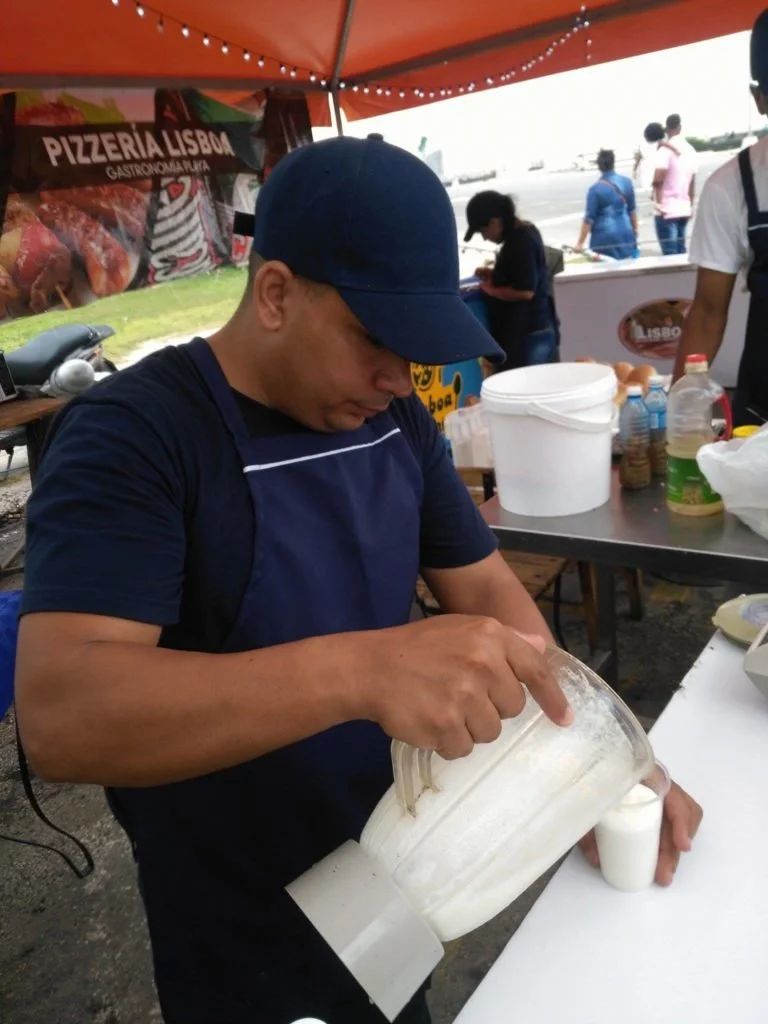Welcome to La Habana (Day 1)
Normally for my summer travels I head to France or another European destination. But having lost my dad earlier this year, I knew that for this season I wanted to do something together with my mom. In the past she was never able to travel as she was dad’s primary caretaker throughout his long and complicated struggle with cancer. But these days, and naturally this feels bitter-sweet, mom now has the option to spend time away from home in places that she has never been to before.
We chose Cuba, as this is an island that is close to my parents’ Miami home (only 90 miles from South Florida) and is a place that she and I had talked about visiting for some time as Cuba and Haiti, being neighbors, share very similar cultures and lifestyle.
Traveling to Cuba from the US is actually very easy. After half a century of tight restrictions on American visitors to the island, 2016 saw a major change, a relaxing of the rules allowing Americans to legally visit Cuba on their own, as long as the visit falls under one of the 12 approved categories. So while going there as a ¨tourist¨ is still prohibited, travelers can still visit Cuba by declaring one of the following reasons. Keep in mind that these are the policies in place as of this date and may be subject to change at any given time.
Family visits
Official business of the U.S. government, foreign governments, and certain intergovernmental organizations
Journalistic activity
Professional research and professional meetings
Educational activities
Religious activities
Public performances, clinics, workshops, athletic and other competitions, and exhibitions
Support for the Cuban people
Humanitarian projects
Activities of private foundations or research or educational institutes
Exportation, importation, or transmission of information or information materials
Certain export transactions that may be considered for authorization under existing regulations and guidelines.
For purposes of this trip, I selected #3 since I write a travel blog. My mom selected #8-Support of the Cuban People, the option most Americans select when booking their trip. To book a flight to Havana…
Go directly to the airline website and select dates/times as you would for any other destination. I went to Delta.com. Other carriers include American Airlines, Southwest, United, JetBlue and several others.
Before confirming the ticket purchase, you will see a screen prompting you to state the purpose of your visit (based on one of the 12 reasons mentioned earlier).
Select your option, confirm the trip and voilà
Tourist Card/ Visa
On the day of travel, when you arrive to the airport you’ll go to your airline and ask for the Cuba Travel Desk. You’ll be given a sheet listing the 12 categories and once more, just mark off the purpose of your visit (e.g. Support of the Cuban people). There’s an additional fee (with Delta it was $50) for the tourist card/visa which is needed for entry into the country. This visa is issued at the same time as your boarding pass. Be sure to hold onto it as you will need both the visa and passport when you arrive to Passport Control in Havana.
Welcome to La Habana!
We had previously arranged for airport transfer through Mirta, hostess of the bed & breakfast where we stayed. So by the time we got to the arrivals hall in José Martí airport, Juan, the driver was there to greet us with a warm and friendly smile. He spoke English (a plus) and helped us find our way to the cambio for money exchange. Cash is king in Cuba- no ATM’s or credit card machines. So it is important to bring enough cash to change money.
When we arrived to the home Mirta, her aunt, and her youngest son, as this is a private family-run business, were there to welcome us. We all sat in the living room, met the house parrot named Pepe, and chatted about Americans traveling to Cuba. It is estimated that nearly 600,000 Americans visit the island per year and that number continues to grow.
In talking with the Cuban people who live there, they see tourism as a positive and said that they are happy about this re-connection with their American neighbors. In fact, out of all the people whom we met and spoke with on this matter, not one said the contrary. Tourism they say has opened doors to entrepreneurship, which benefit the Cuban people both in work life as well as family life. More and more Cubans are now able to own property, which in turn they open to visitors as vacation rentals or bed & breakfast accommodations. This is what Mirta does, and thanks to American based company Airbnb, her business has been thriving and is steady. Consequently, for this kind of entrepreneurship in particular, the need for internet access is now high priority- for booking and reservations, payment, email communications, etc. This is where Google has stepped in and partnered with Cuba’s national telecom provider, ETECSA, the first time a foreign internet company has hosted anything inside Cuba.
When tourists visit Havana, they like to ride in those old classic cars. This equals a higher demand not only for drivers, but also mechanics, who are now beginning to open their own automotive shops. And of course we also can’t forget about the ¨paladares¨, privately owned restaurants serving some of the best Cuban and other cuisine. When talking with the local people, visitors get a sense of how proud Cubans are of their country and their eagerness in wanting to share their culture with others.
El Centro/ Central Havana
The neighborhood we stayed in was Centro or in English, Central Havana. This is an area that is less popular with tourists as the ¨look¨ is not as charming as what you’ll find in the more tourist-friendly Habana Vieja (Old Havana). We ended up in this neighborhood sort of by happenstance. When booking this Airbnb reservation, I wasn’t familiar with the different barrios (districts) in Havana and selected the place because I liked the traveler reviews for this particular bed & breakfast. Also, the location was convenient as it’s within walking distance to places of interest.
But as it turned out, we loved the neighborhood! While there are a number of dilapidated and crumbling buildings and potholed streets, all the result of the collapse of the economy combined with natural disasters (i.e. hurricanes), Centro is a lively and colorful district that offers a more authentic glimpse of Havana life. Here is where you’ll find the neighborhood markets where ration boards are still displayed indicating the food rations for the month. Street vendors push their carts or bicycles selling galletas (crackers), helado (ice-cream) and even bags of fresh garlic and shallots. Convento y iglesia del Carmen is a beautiful neighborhood church open for mass everyday except Mondays. At night, you’ll see residents in their homes talking on the phone, preparing dinner, cleaning, or watching TV. But most people, because housing is overly crowded (and hot), the residents are in the streets- conversing, walking, and simply just ¨hanging out¨.
Malecón
After spending the early part of the afternoon visiting around Centro, we headed to the Vedado neighborhood and to Malecón. The Malecón is an esplanade and seaside avenue about 7 km long and is Havana’s outdoor lounge. It is one of the most popular gathering spots for both locals and visitors alike. We especially enjoyed going there in evening around sunset.
La Piragua was one of my favorites. It’s a park just across the street from the Malecón, on the rearside of the Hotel Nacional. I’m not sure if there’s an actual schedule of events. But it was a Sunday afternoon when we were walking along the Malecón and heard salsa music coming from this direction. Of course we had to go and check it out! There, we found what basically was a huge block party- local people, food, drink, and Cuban salsa dancing. Here you can also find cajitas (boxed food to go) which is good and inexpensive. Menus featured chicken, pork, beef, croquetas, tamales, and of course rice as a side. This was also where I had THE best mojito during my stay in Havana!
Next we went to the famous Hotel Nacional. This historic landmark located in the Vedado neighborhood opened in 1930 and was built and operated by US owners. Back then, the hotel featured a (mafia-controlled) casino, one that rivaled ones in Las Vegas, and became a luxury hot-spot for American tourists and high-rollers. There was rum, entertainment, gambling, and showgirls making it a favorite hangout for the chic and glamorous. However, this American-run establishment was not open to everyone. No Cubans were allowed to stay here; and, no people of color including Josephine Baker and Nat King Cole, even though they were contracted to perform for audiences.
Over the years, Hotel Nacional welcomed prominent names such Jimmy Carter, Walt Disney, Frank Sinatra, Ava Gardner, Danny Glover, Leonardo di Caprio, Jean Paul Sartre, Ernest Hemingway, John Kerry, and US Governor Jesse Ventura. It was also the site of the ¨Havana Conference¨, a week-long mob summit organized by Charles “Lucky” Luciano and Meyer Lansky where Sinatra provided the entertainment. Be sure to see the lobby, the gallery of photos of famous persons, old postal box and beautiful dining room.
























































